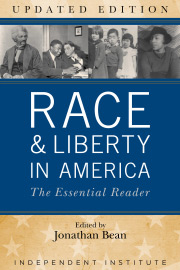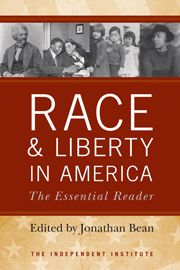The fire in the streets of Ferguson is reminiscent of the urban riots that burned nearly all major U.S. cities in the 1960s. Black rioters burning down black neighborhoods. Once again, there is a false assertion that the rioting is an expression of outrage against “the system.” Sadly, there has been a lack of police or National Guard protection for the real victims of rioting, then and now: small business owners, including many African American business owners and their employees.
Today’s “warrior cops” are better armed with military gear and riot control training, yet the urban policy remains the same: “it is better to let them loot than shoot.” As long as this is the policy of city leaders, riots will continue whenever there is an excuse for young people to loot pharmacies and liquor stores, torch hair salons or furniture stores, and wipe out the livelihoods of their neighbors. We have learned nothing from the well-documented tragedies of the 1960s.
Looting and arson in the 1960s wiped out entire business districts in black neighborhoods. Many riots were precipitated by encounters with police, such as a police raid on an illegal after-hours bar in Detroit—an incident that resulted in the destruction of over 2,000 small businesses and buildings. This cycle played out in cities across the nation, resulting in 200 deaths and enormous property damage. The physical and emotional scars of those riots remained decades after the fires expired.
Although police were often, rightly or wrongly, blamed for precipitating conflict with black youth, their role was even more important for what they did not do: protect the business owners and the vast majority of blacks who disapproved of the rioting. In the 1960s, civil leaders ordered police to step aside because they lacked discipline, often shot indiscriminately, and had no understanding of riot control. The pages of business magazines were filled with stories of mom-and-pop business owners having an entire lifetime of work destroyed. Their employees (almost always black) were casualties as well when they lost their jobs. And so the same scene plays out in Ferguson despite years of improvements in crowd control.
After four “long hot summers” of riots (1965-1968), police departments developed SWAT teams trained in controlling them. This time the police were better equipped to respond and protect the businesses that serve the community. Nevertheless, the lack of a National Guard presence, combined with a passive role by the police, allowed looters and arsonists to prey on unarmed business owners. The police did not retreat from the area (as they did in the 1992 Rodney King riot), but they lacked the presence to protect property owners.
Rioters did not represent the will of their communities, either then or now. Most of those surveyed in Ferguson would agree with the statement made by community activist Jerry G. Watts after the 1992 Los Angeles riot: “rioting is not a democratic act. ... Had the rioters polled their neighbors they may have discovered that the majority of the local residents, who were not participants in the rioting, did not want their neighborhood burned down.”
Small business owners did not kill Michael Brown. Self-employed mothers are not “the system” that “social justice” activists say needs changing. How does one explain to Natalie Debose, African American owner of Natalie’s Cakes and More, that her smashed-up store is the result of pent-up anger directed at police? Debose’s fate is a sad repeat of that experienced by business owners in the 1960s: “This is America?” one elderly woman cried, after witnessing the destruction of her family clothing store in 1968. “My husband and I worked 40 years to build this place and now they’ve gone and taken everything we had.” Debose had just started her cake store, but her pain is just as real.
Then and now, let us put faces on the riots: also the gleeful grins of rioters as they pour out of stores with goods, juxtaposed with the crying eyes of business owners who baked cakes, styled hair, and otherwise provided something of value to the community. The eyes of the police, covered by riot masks, look on indifferently to the fates of those victimized. “This is America?” Indeed.









